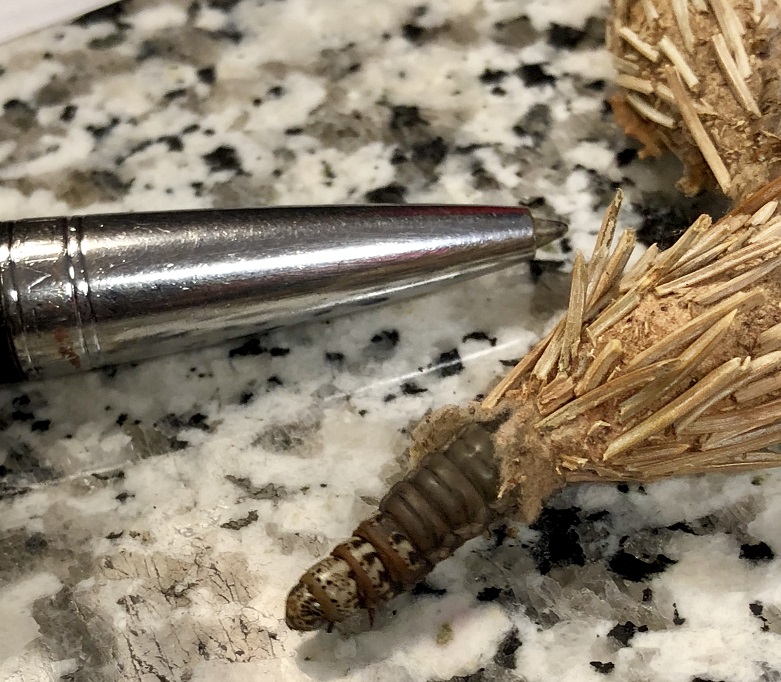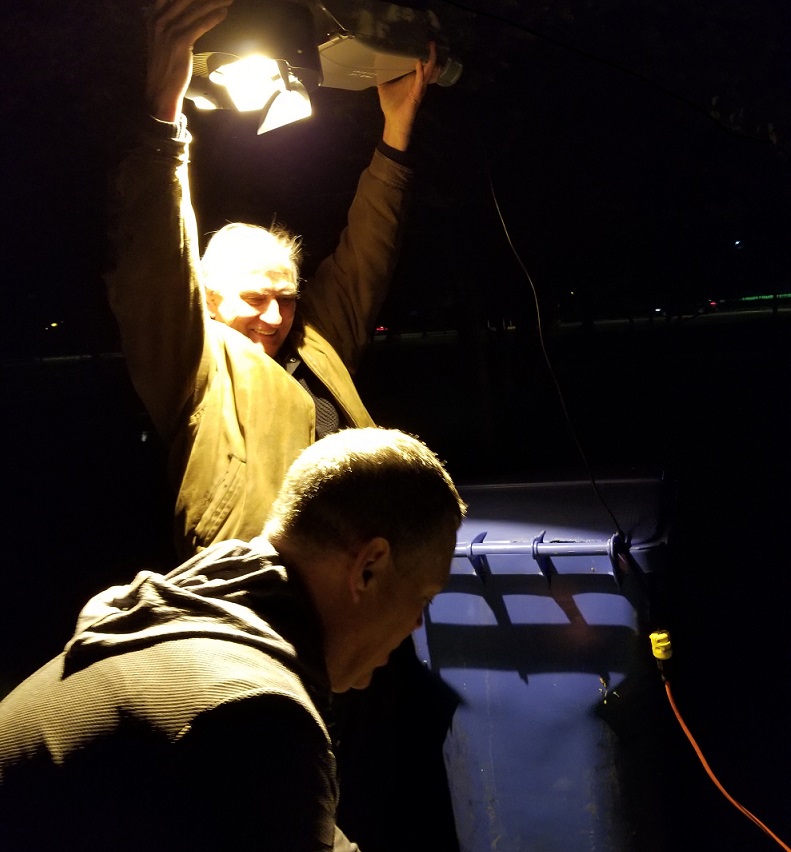Solutions for a Cold, Wet Spring
Podcast: Play in new window | Download (Duration: 1:43:44 — 48.3MB)
Subscribe: Apple Podcasts | Spotify | Android | iHeartRadio | Podchaser | Email | TuneIn | RSS | More
Another visit from Skeet
(May 12, 2019) If you don’t think it’s been a cold, wet spring, you probably don’t live in the northern tier of the United States. Or you don’t go outside very often. Just yesterday, our meteorologist Rick DiMaio sent us and article with the revealing headline, Wettest 12 Months in U.S. History. Which means that you haven’t been imagining it.
The 12 months ending in April 2019 were the wettest year-long period in U.S. records going back to 1895, according to the monthly U.S. climate summary issued Wednesday by the NOAA National Centers for Environmental Information. Averaged across the contiguous U.S., the total of 36.20” made the period from May 2018 to April 2019 the first year-long span ever to top 36”. The old record for any 12-month period was 35.78”, from April 2015 to March 2016.
Given the fierce drought-related impacts of the 2010s—including multiple deadly wildfire disasters from Tennessee to California—it may seem a bit counterintuitive that the nation has actually been getting wetter overall. Across the contiguous U.S., average yearly precipitation has risen by about 2” over the past century, from around 29” to just over 31” (see Figure 1). For the entire nation, including Alaska and Hawaii, precipitation increased by about 4% in the period from 1901 to 2015, according to the U.S. National Assessment.
 We will talk to Rick later in the show about the causes of this weather (or is it climate?) anomaly. But the first hour of our show is devoted to trees. Our buddy Skeet from Bartlett Tree Experts is back in the studio with us. The last time he visited us, in August of 2018, he littered our counter with live bag worms. Insects are cool or creepy, depending on your upbringing. We think they’re cool. We’ll see what he brings to the studio today.
We will talk to Rick later in the show about the causes of this weather (or is it climate?) anomaly. But the first hour of our show is devoted to trees. Our buddy Skeet from Bartlett Tree Experts is back in the studio with us. The last time he visited us, in August of 2018, he littered our counter with live bag worms. Insects are cool or creepy, depending on your upbringing. We think they’re cool. We’ll see what he brings to the studio today.
He wrote to us to say that he has several concerns this spring. The wet and cool conditions create an environment favorable for leaf and needle fungus infections. We’ll talk about what you can do to protect your trees. Skeet warns us about viburnum leaf beetles (VLB), which have been discovered in the area this spring. And he notes that fungal diseases continue to be a problem with spruce trees.
And he has some great advice regarding pesticide us. In a nutshell, “More is not better. Better understanding and proper use; is better.” Amen, brother. Check out this article from the University of Illinois Home, Yard and Garden Pest Newsletter to learn more.
For folks who listen to us on Newsradio KOTA 1380 AM and 100.7 FM in Rapid City, South Dakota, we’re pleased to have Dave Johnson join us today. Dave is the president of the Johnson Tree Company, which is a sponsor of KOTA Radio. On today’s show, we have an opportunity to share information about tree care in Chicago and the Black Hills.
Dave tells me that they work on a lot of ponderosa pines, and a major pest is the mountain pine beetle. In fact, in addition to being “The Tree Guy,” Dave is a representative in the South Dakota State Legislature. He has been fighting for funds for preventative measures against mountain pine beetles. The bugs ravaged about one-third of the Black Hills National Forest and killed millions of trees during a 20-year epidemic that began in 1997.
Dave also has an interesting take on the emerald ash borer invasion, which has ravaged ash trees in the Midwest. It has been confirmed in South Dakota, but Dave describes Rapid City as an “island” that has yet to bear the brunt of the insect’s damage.
Anyway, we’re really looking forward to the meeting of American arborists on today’s show.
Go Into the Woods with us!
We start a very busy second hour with Dick Peach, president of the Evanston Environmental Association. Once again, The Mike Nowak Show with Peggy Malecki is a media sponsor for Nature’s Night Out, their annual fundraiser. The City of Evanston is also a presenter, and proceeds go to the the Evanston Ecology Center.
The theme this year is Into the Woods, and the event is this Friday, May 17th, 2019, from 7pm to 10:30pm at the Evanston Ecology Center, 2024 McCormick Blvd, Evanston, IL 60201.
The event was known as the Evanston Green Ball until 2018, when it was renamed Nature’s Night Out. It’s a night of fun, food, dancing and conversation with like-minded folks about the environment. Peggy and I (or at least one of us) will be there this Friday, so stop by!
The next step for Chicago Market
You probably thought it was a piece of cake to put together a co-op grocery store. Well, you need to talk to the folks at Chicago Market, who have been working on this since I was at Progresso Radio down the dial, which was more than five years ago. They’re creating a local, sustainable co-op grocery store on the city’s north side. They have secured a space in the historic Gerber Building at the Wilson CTA Station in Uptown. They have many people who have signed on to become
what they call “owners.”.
Now they just need $1.8 million in loans from those owners to fund the build-out and construction of the store. The Co-op has already raised 15% of its overall goal, nearly $300,000, and plans to raise the additional $1.5 million by June 9, 2019.
Adding to the recently growing landscape of the Uptown community, Chicago Market is expected to create around 40 new jobs in the area and projects sales of more than $9 million into Uptown’s local economy within the first year. The grocer will feature products that are fresh, local, organic, sustainably sourced and seasonal. Additional amenities will include prepared foods, a cafe, community programming and a 40-car parking lot.
This morning, our old friend Grant Kessler joins us on the show. Grant is the board president and communications and marketing team lead for Chicago Market. Peggy and I have worked with him for years, mainly at the Good Food Festival. Joining him today is Sofia Jouravel, MPH, who is a board member and lead for the Owner Loan Campaign Team.
Making Chicago’s Smart Lights really smart
Not quite two years ago, the Chicago Infrastructure Trust, in coordination with the City of Chicago and the Chicago Park District, launched a major initiative to upgrade more than 270,000 of the city’s street, alley and park lights to more reliable and higher-quality lighting. It’s called the Chicago Smart Lighting Program (CSLP).
Two weeks ago Mayor Rahm Emanuel’s office announced the start of the next phase of the program, which includes the installation of an additional 40,000 new LED streetlights in neighborhoods across the City. Installations in the current phase will be continuing through August when the City expects to reach the halfway point of the four-year project.
But while it’s likely that the change to LEDs will save the City money, there are other issues that are created by urban lighting. The inability to see stars is one of them. The disruption to circadian rhythms in humans and wildlife is another. Some of these issues are being addressed by the new lighting. Unfortunately, others are not. Light on the blue end of the spectrum, for instance, can be detrimental. You can read more about the adverse effects of artificial light at the International Dark-Sky Association website.
 Audrey Fischer from the Chicago Astronomical Society has been an advocate for dark skies on our show for years. This past week, she helped set up a gathering of folks Humboldt Park to test some of the new LEDs. The lead on this was David Mitchell, CEO of a company called Lumican. You can watch the Facebook videos that we live streamed here, here, here and here. We were joined by several other people, including 32nd Ward Alderman Scott Waguespack.
Audrey Fischer from the Chicago Astronomical Society has been an advocate for dark skies on our show for years. This past week, she helped set up a gathering of folks Humboldt Park to test some of the new LEDs. The lead on this was David Mitchell, CEO of a company called Lumican. You can watch the Facebook videos that we live streamed here, here, here and here. We were joined by several other people, including 32nd Ward Alderman Scott Waguespack.
Those videos will walk you through the light tests we did to determine the strength and the wavelength of the lights being installed throughout Chicago. The final video also shows a working model of a light that Lumican has created which could revolutionize street lighting throughout the world. As they write on their website,
Lumican has launched a series of dark sky street lights with low blue content and a warm amber colour, the first to match the 2200K of high-pressure sodium. These street lights have full cut off shields that direct and shape the light to illuminate only where intended. The shields on these fixtures have 20 scenes designed for various scenarios to prevent glare and light trespass. This new line of shields not only remove glare but can achieve a BUG rating of zero for each focus area.
Unfortunately, understanding all of what’s at stake isn’t simple. But we’ll give it a shot on today’s program when David and Laura Mitchell from Lumican stop by the WCGO Studios.

